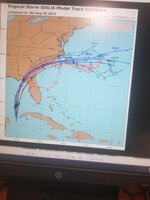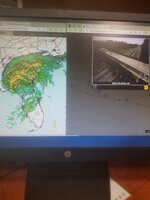Navigation
Install the NWFA app
How to install the app on iOS
Follow along with the video below to see how to install our site as a web app on your home screen.
Note: This feature may not be available in some browsers.
More Options
You are using an outdated browser
The browser you are using is likely incompatible with our website. We recommend upgrading your current browser or installing an alternative.
JavaScript is disabled
Our website requires JavaScript to function properly. For a better experience, please enable JavaScript in your browser settings before proceeding.
-
Join the #1 community for gun owners of the Northwest
We believe the 2nd Amendment is best defended through grass-roots organization, education, and advocacy centered around individual gun owners. It is our mission to encourage, organize, and support these efforts throughout Oregon, Washington, Idaho, Montana, and Wyoming.Free Membership Benefits
- Fewer banner ads
- Buy, sell, and trade in our classified section
- Discuss firearms and all aspects of firearm ownership
- Join others in organizing against anti-gun legislation
- Find nearby gun shops, ranges, training, and other resources
- Discover free outdoor shooting areas
- Stay up to date on firearm-related events
- Share photos and video with other members
- ...and much more!
Bronze Supporter
- Messages
- 5,269
- Reactions
- 13,647
I would bet that plant is hardened in such a way that most anything will just bounce right off. Or maybe they are putting up the plywood shutters, I don't know.
- Thread Starter
- #3
As it happened, the hurricane turned to the east, and the eye did not hit St. Marks. They didn't get the predicted 12 foot storm surge. Which is a good thing. 95% of military ball powder is made at St. Marks; a large percentage of reloading powder comes from there too.
Bronze Supporter
- Messages
- 19,736
- Reactions
- 55,093
My friend lives in Chipley Florida, the first map showed it was gonna come up there and get them wet but then that changed and it went to the east and they didn't even have any showers.
I'm still going to move down there, screw it I'm gonna die one way or another.
This is a really cool website looking at storms.

 earth.nullschool.net
earth.nullschool.net


I'm still going to move down there, screw it I'm gonna die one way or another.
This is a really cool website looking at storms.

earth :: a global map of wind, weather, and ocean conditions
See current wind, weather, ocean, and pollution conditions, as forecast by supercomputers, on an interactive animated map. Updated every three hours.


- Messages
- 944
- Reactions
- 1,245
Not saying you're wrong, BUT - what kind of military-industrial planner relies upon a single plant for 95% of small arms powder, and places it in a hurricane zone?As it happened, the hurricane turned to the east, and the eye did not hit St. Marks. They didn't get the predicted 12 foot storm surge. Which is a good thing. 95% of military ball powder is made at St. Marks; a large percentage of reloading powder comes from there too.
Is this true? That's insane.
- Thread Starter
- #6
You make a good point. I've read that this is true in more than one place, one said, "almost 100%" of US military small arms munitions up to 20mm, and even some mortar ammunition.Not saying you're wrong, BUT - what kind of military-industrial planner relies upon a single plant for 95% of small arms powder, and places it in a hurricane zone?
Is this true? That's insane.
And a very large portion of sporting ammunition and cannister grade powder for reloaders. I don't believe any extruded propellants are still made in the US. In today's business world, it's a risky enterprise. There is no small element of danger involved with making and handling propellants. Then there is the regulatory aspect involved with making powder, all the environmental concerns and so forth. Then there is insurance against all sorts of situations which costs a lot of money. So basically, the US has only one smokeless powder plant, St. Marks.
Extruded (stick) powders sold here are made in Canada, Australia, France, Belgium, Sweden, Finland, maybe Switzerland.
- Messages
- 944
- Reactions
- 1,245
I'm (again) not saying you are wrong, but that's nuts. I'll look into this when I have time the next few weeks. Thank your bringing this up and with detail.You make a good point. I've read that this is true in more than one place, one said, "almost 100%" of US military small arms munitions up to 20mm, and even some mortar ammunition.
And a very large portion of sporting ammunition and cannister grade powder for reloaders. I don't believe any extruded propellants are still made in the US. In today's business world, it's a risky enterprise. There is no small element of danger involved with making and handling propellants. Then there is the regulatory aspect involved with making powder, all the environmental concerns and so forth. Then there is insurance against all sorts of situations which costs a lot of money. So basically, the US has only one smokeless powder plant, St. Marks.
Extruded (stick) powders sold here are made in Canada, Australia, France, Belgium, Sweden, Finland, maybe Switzerland.
As an aside, my grandfather organized and ran the ammunition trains from the Evansville (IN) ordinance plant during WWII (for the Southern Railway). Besides his experience and what he told me, and my own both amateur and professional historical interest in Naval munitions, I am shocked we could be reduced to this.
- Thread Starter
- #8
During WW2, small arms ammunition was made in many different locations spread around the US. That diversification is long gone. Back in those days, they figured it was possible for air raids to wipe out entire industries if they were too closely placed together. At the end of the Korean War, when the US Gov't wanted to resume production of the M1 Rifle, one of the major considerations in selecting IHC as a contractor was because of their location in so. Indiana, not Mass. where both HRA and SA were located.ammunition trains from the Evansville (IN) ordinance plant during WWII
So these days, having only one plant making all the domestic powder gets to the heart of my initial post. If the St. Marks plant got overwhelmed by tidal surge, think how that might affect domestic ammunition production. It doesn't seem like good business to concentrate in one location, but on the other hand you cannot force private enterprise to enter into ventures that are overly fraught with risk. The alternative is for the gov't to resume production on its own and contemporary policy for outsourcing as much as they can runs counter to that idea. Not to mention the amount of time it would take to set up such a plant. Between WW2 and Korea, later between Korea and Vietnam, the US Gov't placed some gov't-owned munitions plants on standby. But later, like 1990's when it was fashionable to close down military installations, those remaining were closed down and the property disposed of entirely.
Due to the situation in Ukraine, the US Gov't is up against a new phase in ammunition procurement. Without being an actual combatant. It has cleared out warehouses here in the US and in overseas stockpiles to supply Ukraine with munitions. Existing contractors have ramped up production of some items that haven't been made in many years, due to previous US low burn rate. Some ammunition items are having to be made overseas by the US Gov't to supply Ukraine. Well, it's sure one great way to rotate stock. The shipping business is making good money moving these things around.
Bronze Supporter
- Messages
- 5,269
- Reactions
- 13,647
I don't think Allant powders are made it St. Marks, I think they are either imported or made in Idaho.
- Messages
- 944
- Reactions
- 1,245
That was a big part of his point, foreign production is a huge component and that's a weak point.I don't think Allant powders are made it St. Marks, I think they are either imported or made in Idaho.
I'm familiar with how supplying Ukraine is stressing our supply chain. It's a damn good stress-test in my opinion because it is showing ridiculous weaknesses we should NOT be experiencing.
Share This Discussion
Similar threads
- Replies
- 69
- Views
- 2K
Upcoming Events
New Classified Ads
-
-
-
-
-
-
-
-
Safariland Oregon City plate carrier
- Started by rushdrummerman
- Replies: 0
-
-
Swarovski spotting scope 20-60x
- Started by rushdrummerman
- Replies: 0
Support Our Community
If our Supporting Vendors don't have what you're looking for, use these links before making a purchase and we will receive a small percentage of the sale











